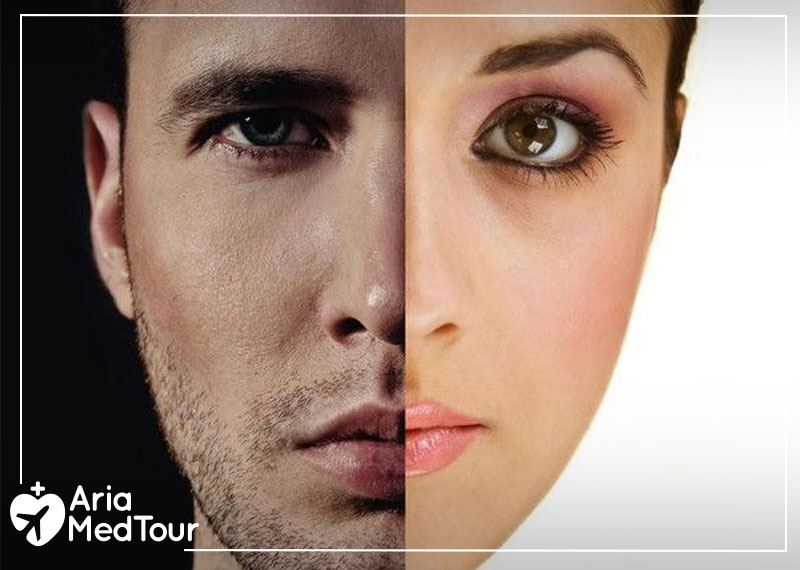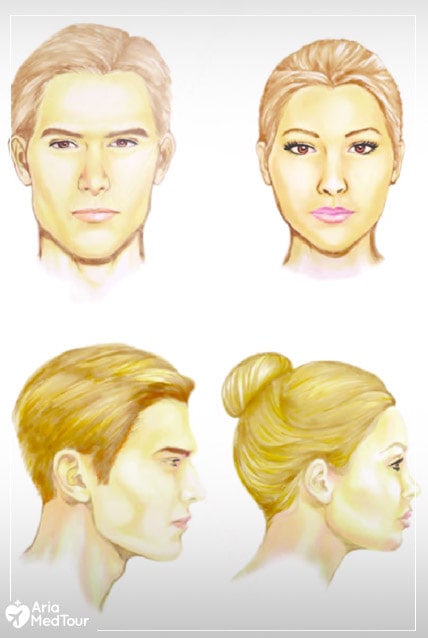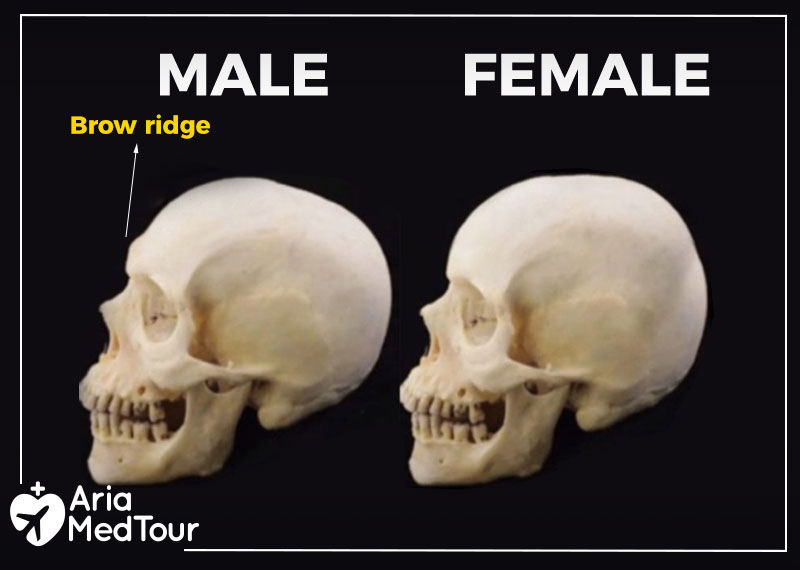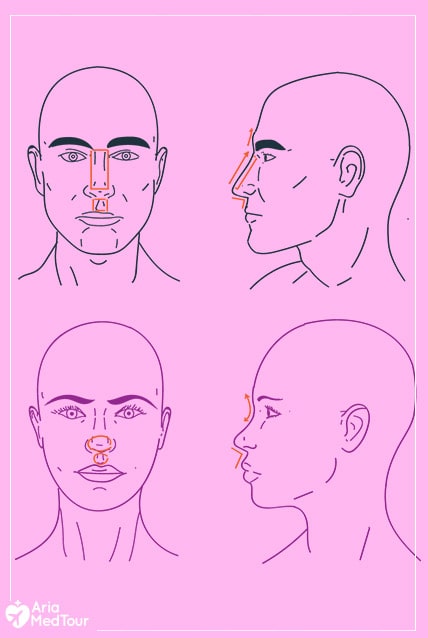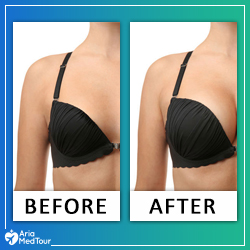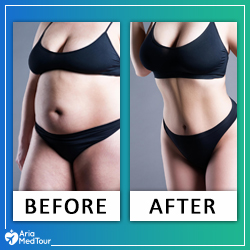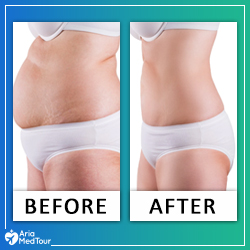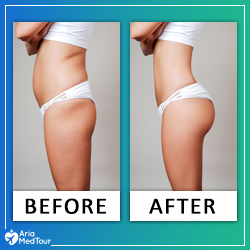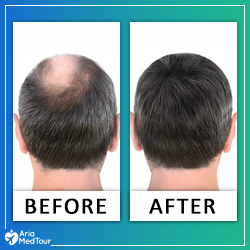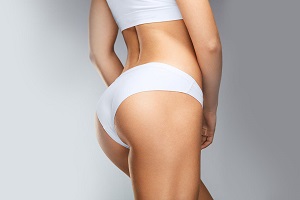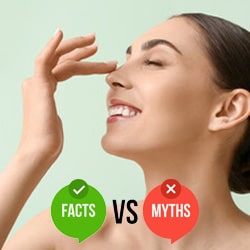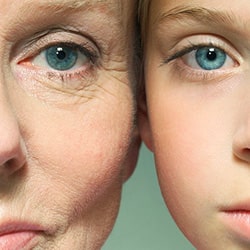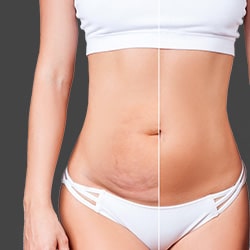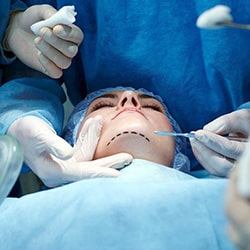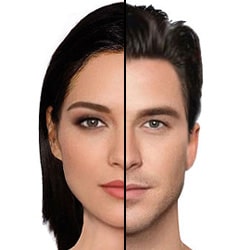Have you ever seen a grown-up and wondered whether they’re a man or a woman just by looking at their faces? What in people’s faces helps us notice their genders or perceive them as women or men?
Differences between male and female facial features
Our faces say a lot about us. Revealing a person’s gender is one of the first things one’s face signals about them to the outside world.
Each individual’s face has unique features influenced by many biological and non-biological factors in complex interactions with the genome. While it’s not that simple to generalize all facial features to a specific gender, there are still some differences between male and female face structure and shape, which helps us perceive a face or its portrait as a female or a male.
So here come the questions: “what makes a face look feminine, and what makes it look masculine?”, “How do you tell somebody’s a man or a woman if you only get to see their bare faces, no beard and mustache, no make-up, and gender-specific accessories?”
What makes a person’s face look masculine or feminine?
This article will review the 8 parts of the face that mainly differ between males and females.
Where do the facial differences between men and women lie?
Due to the biological differences between men and women, foreheads, eyes, eyebrows, noses, chins, jawlines, cheeks, and lips generally develop differently in the two genders. These differences are observed in size, shape, structure, proportions, and the relations of the different face parts to each other.
Regardless of our biological gender, many of us may have one or more rather similar facial features to those of the opposite sex, which is pretty normal. Yet, a combination of these features and their relation to each other can usually give a person a feminine or masculine look.
We rely on these facial characteristics to guess one’s gender and recognize somebody’s face as a male or female, sometimes without even knowing this. Artists use these facial differences and usually accentuate these characteristics to better depict and differentiate a male or female portrait.
Forehead: Differences between a male and a female forehead
Let’s start with the topmost part of the face, from the hairline to eyebrows, the forehead. While foreheads are not typically considered a very prominent facial feature, considering the fact that they cover about 35% to 40% of the face, foreheads are dominant enough to contribute to significant differences between male and female faces.
Compared to women, men generally tend to have stronger foreheads, higher, broader, and more protruded due to the shape of their forehead frontal bone. A somewhat receding hairline could also express a more masculine face, causing the forehead to look even higher in men.
The bony brow ridge, running above the eyes from side to side on the more protruded forehead of a man, builds a slope in men’s brow and a steeper angle with the nose, all causing eyes to look deeper-set. However, a softer brow ridge or the absence of this bony ridge in women gives the forehead a vertical or rounder and smoother appearance. The more open angle between nose and forehead in women is also due to the less pronounced or no brow ridge in this gender.
Differences between a male and a female forehead
Eyes and Eyebrows: Are they any different between the two genders?
Eyes are distinctive facial features, attracting a great deal of attention both in communications and also in aesthetics. They’re probably the most revealing parts of our faces when it comes to facial identity. In addition, eyes also share a lot about our emotions and feelings.
Slight differences in eyes and eyebrows shape, size, position on the face, and their relation to each other and other parts of the face cause enormous differences in individuals’ looks which can also give a feminine or masculine appearance to a face.
Men tend to have smaller deeper-set eyes than women, who generally have larger ones. The longer distance between women’s eyes and their eyebrows causes female eyes to look larger and more open. Women’s eyebrows are also narrower and usually arched, making them appear even higher, and helping their eyes look bigger. Men, on the other hand, have straighter eyebrows that are bushier and placed closer to the eyes, accentuating the smaller size and deeper position of their eyes.
Differences between a male and a female eyes and eyebrows
Nose: What is a masculine or feminine nose?
Considering the central position of the nose, It is one of the most prominent facial features. The nuances in nose size and shape can lead to substantial differences in looks. Since particular features of the nose tend to be found more frequently in a specific gender, they can be considered characteristics of gender and help make up a more masculine or feminine face.
Male noses tend to be larger, with wider bases, nostrils, and bridges. A straighter and higher nasal bridge or even the presence of a dorsal hump is often considered more masculine. Conversely, female noses are usually smaller and have curved bridges. Moreover, women’s noses tend to turn upward at the tip, building a bigger nasolabial angle (the angle between the nose and lips).
This angle is smaller in men, usually not greater than 90 degrees, since male noses are not typically upturned.
Differences between a male and a female nose
Cheeks and cheekbones: How are male and female cheeks different?
Cheeks and cheekbones are other facial features that can differ between men and women. You can usually find female cheekbones fuller and more prominent than male ones. Feminine cheeks look rounder and softer.
On the contrary, male cheeks are flatter on the face and are not as full and protruded as women’s cheeks.
Differences between a male and a female cheeks and cheekbones
Chin and Jawline: Do men have different chins and jaws from women?
The lower part of the face also has some gender-revealing characteristics. If you only get to see the chin and jaw of a bare face, leaving lips out, you still have a great chance to distinguish whether it belongs to a male or female face.
Have you ever noticed the square jaw of a masculine look with its chiseled outlines? Compared to male jaws, female jaws are smaller and form a V-shape with a less pronounced definition that appears rounder. Men’s jaws are larger and broader, and their chin is usually more protruded. The more prominent jawline around the chin is another distinctive feature of a masculine face.
Differences between a male and a female chin and jawline
Lips: What are the differences between male and female lips?
If you’re not quite sure to form your judgment about the lower face gender based on the chin and jaw, a quick glimpse of the lips will probably raise your confidence to one hundred percent of certainty.
Lips are quite expressive facial features. Although there are different lip types that could vary from one person to another, women generally have more significant and fuller lips than men, who have narrower lips that are flatter and less pronounced. Artists designing men accentuate these features sometimes by not drawing an upper lip for men to depict a masculine face. Also, Men’s lips are placed further from the nose base, while this space is shorter in women.
Differences between a male and a female lips
How can I make my face look more feminine or masculine?
The facial appearance of different individuals lies on a spectrum, some closer to a perceived typical masculine face and some closer to a typical feminine one.
As mentioned before, the presence of some facial features attributed to the assumed opposite sex is quite normal and doesn’t necessarily give a face a distinctive masculine or feminine look. However, a combination of these features could move one’s face position on the male-female spectrum to fall closer to what is perceived as a man or a woman.
Attention to facial differences between men and women helped plastic surgeons find ways to facilitate transgender patients’ transition towards the gender they identify themselves with by giving them a more feminine or masculine look. However, non-transgender people may also rely on these differences to achieve their aesthetic goals by accentuating feminine or masculine facial features.
While make-up helps with temporary fine-tuning of the face, some surgical and non-surgical procedures can change looks for a longer time or even permanently. A number of elective surgeries used to soften the face and reduce the masculine features called Facial Feminization Surgeries (FFS) help transgender people and others seeking a more feminine look to feel more comfortable with their appearances and more confident about themselves. These surgical methods include brow bone reduction, hairline lowering, rhinoplasty, blepharoplasty, lip augmentation, jaw reduction, etc.
On the other hand, defeminization or Facial Masculinization Surgeries are a collection of surgeries giving a more angular and masculine look to a face. Jawline contouring and chin augmentation are among the main masculinization procedures. You can find more details about these procedures here.
Summary
Generally, men and women tend to develop different facial features due to their biological differences. These differences mainly lie in 8 parts of the face and the distinctions are as follows:
Differences between male and female facial features
The abovementioned features have been the base for many surgical and non-surgical procedures for gender transition purposes or mere aesthetics.

